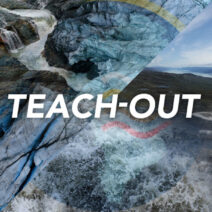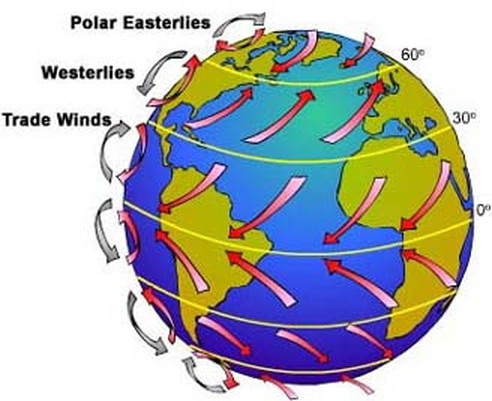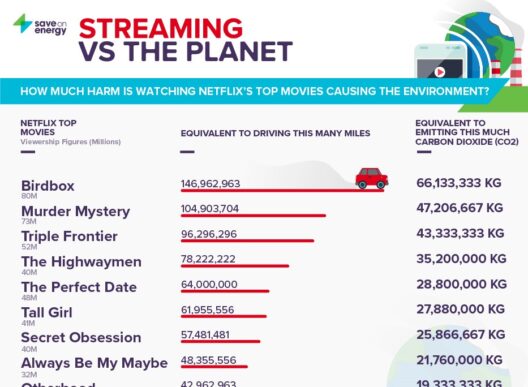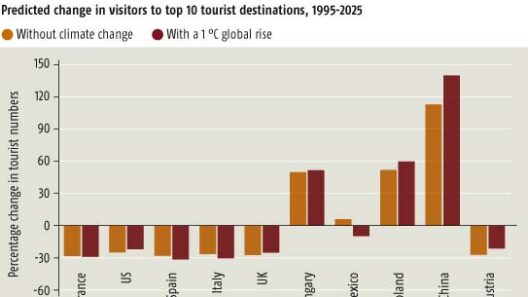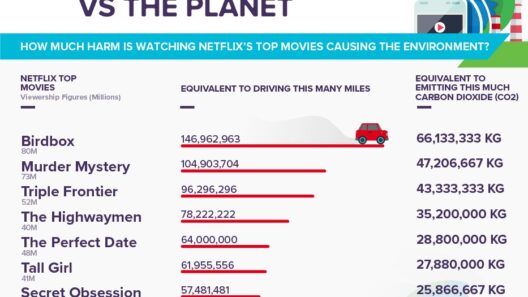Climate change transcends mere temperature fluctuations—it manifests as an intricate tapestry of environmental transformations that redefine our planet in myriad ways. While the proverbial mercury may rise, the ramifications ripple through our ecosystems, economies, and societies, altering the very fabric of life as we know it.
To comprehend these changes, one must first grasp the multifaceted nature of climate change. It is not a singular event; rather, it is a persistent condition characterized by prolonged alterations in weather patterns, precipitation variability, and an amplification of extreme meteorological phenomena. This broader understanding invites a shift in perspective: it is imperative to look beyond the thermometer and engage with the profound implications of warming on our ecosystems.
One striking illustration of this phenomenon is the accelerated melting of polar ice caps and glaciers. This is not merely a statistic; it is a clarion call for action. The Arctic, for instance, has witnessed a staggering decline in sea ice, with projections estimating a potential ice-free summer within the century. The consequences of such an event are far-reaching, impacting not only global sea levels but also disrupting marine ecosystems and indigenous communities dependent on these icy expanses for their way of life. The once-reliable habitat for polar bears and seals is transforming into a precarious landscape.
Furthermore, as glaciers retreat, freshwater resources that countless communities rely upon are put at risk. Glaciers act as natural water towers, releasing water during warmer months. However, unchecked warming threatens the longevity of these reservoirs, leading to water scarcity in regions that historically enjoyed bountiful supplies. The cascading effects of climate change can precipitate resource conflicts, migratory pressures, and even exacerbate existing socio-political tensions.
Equally compelling is the symbiotic relationship between climate change and biodiversity. As temperatures rise, species find their habitats altered, leading to shifts in distribution and behavior. The delicate balance of ecosystems is disrupted, resulting in a phenomenon known as “trophic mismatch,” where the synchrony between predator and prey cycles is offset. Such disruptions can have immediate, profound consequences on food webs and ecosystem services that humans rely upon, such as pollination and water purification.
Moreover, climate change accentuates the frequency and intensity of extreme weather events. Hurricanes, droughts, floods, and heatwaves are not merely statistical anomalies; they are harbingers of a changing climate. The increasing incidence of these disasters presents challenges for infrastructure, public health, and food security. Regions once considered resilient are now vulnerable, leading to long-term economic ramifications. Agricultural systems, for instance, face a daunting dual challenge: erratic weather patterns and shifting growing seasons threaten food production, jeopardizing food sovereignty and security at a global scale.
The economic implications of climate change are not confined to the immediate loss of resources or property. They reverberate through supply chains, financial markets, and global trade. The interconnectedness of our global economy means that a drought in one country can spike food prices worldwide. This interconnected vulnerability underscores the necessity for cooperative international efforts to mitigate climate change’s most egregious effects.
Next, it is essential to consider the psychological and cultural dimensions of climate change. As ecological changes unfold, the mental and emotional toll on communities cannot be understated. The phenomenon of “eco-anxiety” has emerged, particularly among younger generations who grapple with the enormity of climate challenges. The disconnect between a warming world and societal inaction often leads to feelings of helplessness and despair. Moreover, cultural practices and traditions deeply rooted in the natural environment face displacement due to altering landscapes, further compounding the emotional and cultural upheaval.
In the broader discourse around climate change, hope is a crucial yet often elusive element. Yet it is within this despair that opportunities for innovation and resilience can emerge. Communities around the globe are rallying to adopt sustainable practices, implement regenerative agriculture, and invest in renewable energy sources. The transition toward a greener economy not only abates carbon emissions but also paves the way for job creation and increased investment in local ecosystems. This paradigm shift rests on the foundations of education, advocacy, and shared responsibility.
The transition to a sustainable future necessitates collective action—individuals, communities, corporations, and governments must unify their efforts. Public policy can catalyze significant changes; regulations can incentivize renewable energy technologies and penalize environmentally detrimental behaviors. Equally important is the grassroots movement that champions local solutions, shining a light on the power of collaboration in combating climate change.
In counterpoint to despair lies the undeniable potential for transformative change—an opportunity to rethink our relationship with nature. Sustainable practices must transcend mere compliance; they should encompass a profound respect for the intricate interplay of life on Earth. By fostering symbiosis between human activity and the natural world, society can undertake a journey to re-envision progress. Perhaps the advent of technology can bridge this gap, innovating new pathways toward sustainability while reconnecting humanity with the environment.
As we navigate this complex terrain, the imperative for a holistic understanding of climate change grows ever potent. The shift in perspective—beyond the mere measurement of temperature—demands a comprehensive engagement with the planetary shifts that are reshaping our world. The challenge lies not just in confronting what has been lost but in recognizing and seizing the possibilities ahead. Transformative action can lead to a future that honors, rather than diminishes, the intricate systems that support life on Earth, ensuring a thriving planet for generations to come.

